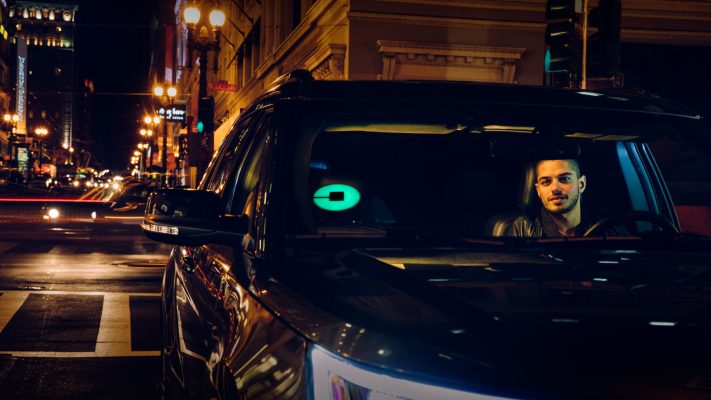Uber announced Thursday it will be deploying new hardware called Uber Beacon in select cities, starting in Miami, Denver, Nashville and Newcastle in the UK. The new piece of hardware is a small, wireless Bluetooth device that is really just a multicolour LED light in the shape of the Uber logo. The idea is that drivers can stick it in the bottom corner of their windshield, and signal riders to help make it easier for them to spot their driver.
The move might sound familiar, because Lyft premiered “Amp,” a similar device with a color-coded display. Lyft’s hardware also has a mock dot-matrix display on the reverse side, which can show text messages to riders once they’re on board.
Uber’s is not quite so sophisticated, but the front-facing light is still big, bright and should be easy to see, even in adverse weather conditions. Uber also isn’t exactly coming late to this – the company ran a pilot project with a prototype light trip that offered a range of color options beginning back in December of last year in Seattle.
The final version of this hardware has the gadget in the shape of Uber’s actual icon, as mentioned, which should further help with identification, and riders can select any potential RGB color output using a sliding color wheel, which means there’s very little chance of having two riders select the same color in the same place at the same time.
Beacon has a built-in battery, and is designed to be able to last through “multiple evenings” of driving according to Uber, and it’s also programmable for custom color displays which Uber says it might use for celebrating holidays or other special city events. The rollout is also targeting an initial deployment in time for New Year’s Eve, with Uber handing them out at driver events in the launch cities to help make one of the service’s busiest nights a bit easier on all involved.
Uber had identified pick-ups as a key area it’s working to improve, since avoiding miscommunication and confusion at that stage can result in much more efficient service overall.
